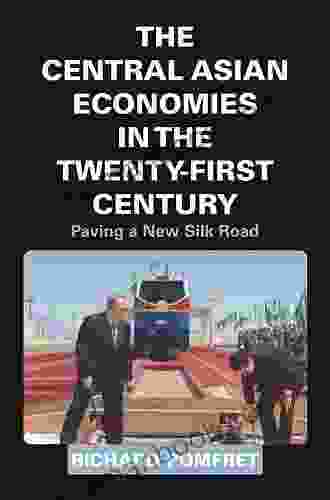Unveiling the Grand Plan: Paving the New Silk Road, a Global Economic Corridor Connecting East and West

In the annals of human history, a grand vision of interconnectedness and prosperity has emerged, a vision that transcends geographical boundaries and brings nations together in pursuit of common goals. This vision, known as the "Belt and Road Initiative" (BRI),is a transformative undertaking that aims to revitalize the ancient Silk Road trade routes and forge new paths of economic cooperation, fostering a more prosperous and interconnected world.
The Origins of the Belt and Road Initiative
The genesis of the BRI can be traced back to a speech delivered by Chinese President Xi Jinping in 2013, where he articulated his vision for a "Silk Road Economic Belt" and a "21st Century Maritime Silk Road." This initiative, rooted in the legacy of the ancient Silk Road, seeks to promote economic integration, cultural exchange, and socio-economic development across the vast Eurasian continent and beyond.
4 out of 5
| Language | : | English |
| File size | : | 7424 KB |
| Text-to-Speech | : | Enabled |
| Screen Reader | : | Supported |
| Enhanced typesetting | : | Enabled |
| Word Wise | : | Enabled |
| Print length | : | 447 pages |
Pillars of the Belt and Road Initiative
The BRI encompasses a comprehensive framework of infrastructure development, trade facilitation, financial cooperation, and cultural exchange. It consists of six key pillars:
- Policy coordination: Promoting dialogue and cooperation on policies related to trade, investment, and infrastructure development.
- Infrastructure connectivity: Enhancing connectivity through the development of roads, railways, ports, airports, and other infrastructure projects.
- Trade facilitation: Streamlining trade procedures, reducing tariffs, and promoting cross-border e-commerce.
- Financial cooperation: Establishing financial institutions and mechanisms to support infrastructure development and trade.
- People-to-people contact: Fostering cultural exchange, education, and tourism to promote mutual understanding and cooperation.
- Ecological civilization: Promoting sustainable development and environmental protection through green infrastructure and low-carbon technologies.
The Global Impact of the Belt and Road Initiative
The BRI has far-reaching implications for global economic development. By enhancing connectivity and promoting trade, it aims to:
- Boost economic growth in developing countries by providing access to new markets and investment opportunities.
- Facilitate trade between Asia and Europe, creating a more balanced and integrated global economy.
- Promote cultural exchange and understanding between different regions, fostering mutual respect and cooperation.
- Address global challenges such as poverty, climate change, and inequality through sustainable development initiatives.
Key Projects and Initiatives of the Belt and Road Initiative
The BRI encompasses a wide range of infrastructure projects and initiatives, including:
- China-Pakistan Economic Corridor: A flagship project that aims to enhance trade and infrastructure connectivity between China and Pakistan.
- Belt and Road Highway: A network of highways connecting China with Central Asia, South Asia, and Southeast Asia.
- China-Europe Railway Express: A rail network connecting China with major European cities, reducing transit time for goods.
- Asian Infrastructure Investment Bank: A multilateral development bank established to support infrastructure development in Asia.
- Silk Road Fund: A Chinese government-owned investment fund dedicated to financing BRI projects.
Challenges and Concerns Associated with the Belt and Road Initiative
While the BRI holds immense potential, it has also raised concerns and challenges:
- Debt sustainability: Some countries may face debt-related issues as a result of BRI-funded infrastructure projects.
- Environmental impact: Critics argue that some BRI projects may have negative environmental consequences.
- Geopolitical implications: The BRI's scope and ambition have raised geopolitical concerns for some countries.
- Transparency and accountability: There have been calls for greater transparency and accountability in BRI projects.
The Way Ahead: Ensuring Sustainable and Inclusive Development
To address these challenges and maximize the benefits of the BRI, it is crucial for all stakeholders to work together towards sustainable and inclusive development. This involves:
- Prioritizing environmentally friendly infrastructure and sustainable development practices.
- Ensuring transparency and accountability in project planning and implementation.
- Addressing debt sustainability concerns through prudent financial management and economic diversification.
- Promoting regional cooperation and multilateralism to mitigate geopolitical risks.
: A Vision for Connectivity and Prosperity
The Belt and Road Initiative is a transformative undertaking that has the potential to reshape global economic and geopolitical landscapes. By fostering connectivity, promoting trade, and facilitating cultural exchange, the BRI aims to create a more prosperous and interconnected world. While challenges and concerns must be addressed, through collaborative efforts and a commitment to sustainable and inclusive development, the BRI can become a catalyst for economic growth, social progress, and global cooperation.
4 out of 5
| Language | : | English |
| File size | : | 7424 KB |
| Text-to-Speech | : | Enabled |
| Screen Reader | : | Supported |
| Enhanced typesetting | : | Enabled |
| Word Wise | : | Enabled |
| Print length | : | 447 pages |
Do you want to contribute by writing guest posts on this blog?
Please contact us and send us a resume of previous articles that you have written.
 Top Book
Top Book Novel
Novel Fiction
Fiction Nonfiction
Nonfiction Literature
Literature Paperback
Paperback Hardcover
Hardcover E-book
E-book Audiobook
Audiobook Bestseller
Bestseller Classic
Classic Mystery
Mystery Thriller
Thriller Romance
Romance Fantasy
Fantasy Science Fiction
Science Fiction Biography
Biography Memoir
Memoir Autobiography
Autobiography Poetry
Poetry Drama
Drama Historical Fiction
Historical Fiction Self-help
Self-help Young Adult
Young Adult Childrens Books
Childrens Books Graphic Novel
Graphic Novel Anthology
Anthology Series
Series Encyclopedia
Encyclopedia Reference
Reference Guidebook
Guidebook Textbook
Textbook Workbook
Workbook Journal
Journal Diary
Diary Manuscript
Manuscript Folio
Folio Pulp Fiction
Pulp Fiction Short Stories
Short Stories Fairy Tales
Fairy Tales Fables
Fables Mythology
Mythology Philosophy
Philosophy Religion
Religion Spirituality
Spirituality Essays
Essays Critique
Critique Commentary
Commentary Glossary
Glossary Bibliography
Bibliography Index
Index Table of Contents
Table of Contents Preface
Preface Introduction
Introduction Foreword
Foreword Afterword
Afterword Appendices
Appendices Annotations
Annotations Footnotes
Footnotes Epilogue
Epilogue Prologue
Prologue James K Lyon
James K Lyon Hellen Heels
Hellen Heels Frank Tieri
Frank Tieri Jared Wynn
Jared Wynn Dean King
Dean King Sarah Elisabeth Sawyer
Sarah Elisabeth Sawyer Tom Teller
Tom Teller Lee H Whittlesey
Lee H Whittlesey Keisha Brooks
Keisha Brooks Jody Long
Jody Long Janet Munsil
Janet Munsil Samuel Pepys
Samuel Pepys Thom Hartmann
Thom Hartmann One
One David J Ridges
David J Ridges Kathleen Belew
Kathleen Belew Randy Larson
Randy Larson Dan Michaels
Dan Michaels Mike Davis
Mike Davis Okongor Ndifon
Okongor Ndifon
Light bulbAdvertise smarter! Our strategic ad space ensures maximum exposure. Reserve your spot today!

 Dwayne MitchellThe Ultimate Guide to Moms On Call Basic Baby Care Months Parenting of Moms...
Dwayne MitchellThe Ultimate Guide to Moms On Call Basic Baby Care Months Parenting of Moms...
 Charlie ScottThe Columbine Tragedy: A Comprehensive Analysis of the School Shooting That...
Charlie ScottThe Columbine Tragedy: A Comprehensive Analysis of the School Shooting That...
 Hamilton BellDive into the Enchanting World of "The Fisher Brothers": A Love Story that...
Hamilton BellDive into the Enchanting World of "The Fisher Brothers": A Love Story that... Tim ReedFollow ·2k
Tim ReedFollow ·2k David MitchellFollow ·7.6k
David MitchellFollow ·7.6k Angelo WardFollow ·11.4k
Angelo WardFollow ·11.4k Denzel HayesFollow ·4k
Denzel HayesFollow ·4k Brenton CoxFollow ·10.3k
Brenton CoxFollow ·10.3k Vic ParkerFollow ·19.6k
Vic ParkerFollow ·19.6k Harold BlairFollow ·8k
Harold BlairFollow ·8k Samuel WardFollow ·15k
Samuel WardFollow ·15k

 Ernest Powell
Ernest PowellBenefits of Corporal Punishment: A Review of the...
Corporal punishment is a form of physical...

 Bobby Howard
Bobby HowardThe Development and Significance of African American...
African American...

 Guy Powell
Guy PowellDown Girl: The Logic of Misogyny - A Comprehensive...
In her groundbreaking work,...

 Forrest Blair
Forrest BlairThe Bikini Changing Room: A Micro Mini Romance
In the heart of...
4 out of 5
| Language | : | English |
| File size | : | 7424 KB |
| Text-to-Speech | : | Enabled |
| Screen Reader | : | Supported |
| Enhanced typesetting | : | Enabled |
| Word Wise | : | Enabled |
| Print length | : | 447 pages |










